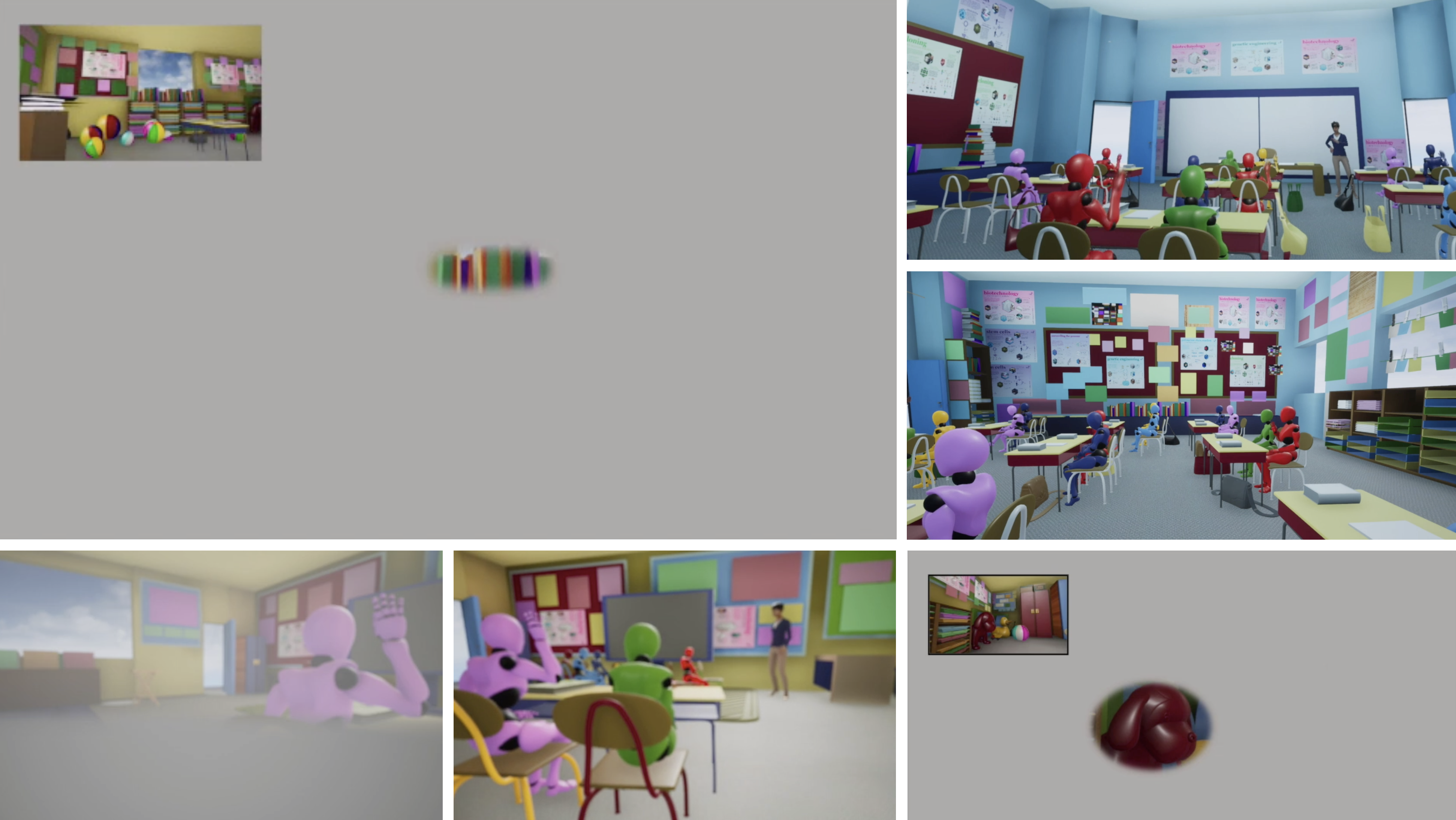History
The way we have developed this preliminary simulation has been to listen in detail to the described visual experiences of adults with CVI who have diagnosed dorsal stream dysfunction, including simultanagnostic vision.
Initially we took videos inside a shop, to show the visual complexity of this exercise.
We then asked volunteer adults with dorsal stream dysfunction to give an auditory account of what they were able to see.
We simulated their verbal description, and asked them to view these simulations and to let us know how realistic they were. The results were fascinating.
We used this information to come up with our next simulation called the Dorsal Stream Dysfunction CVI Experience.
This was viewed by several adults with validated marked dorsal stream dysfunction, who explained that when they compared the simulated version of this video with the version that was not simulated, the experience was very similar.

Some of our virtual reality classrooms with CVI simulations.
Encouraged by these results our team has gone on to develop the material you can see on the Phase 2 CVI-SIM page, which has been validated using the same method.
There is of course a philosophical conundrum in seeking validation of this nature. How can the person with simultanagnostic vision from an early age give an opinion of this nature? Doesn’t their simultanagnosia preclude them from providing such an analysis?
Recognising this conundrum, we have also sought the help from an adult with acquired simultanagnosia during teenage years who has the facility to compare her current vision with her memory of her previous ‘normal’ vision. This witness has affirmed that what we are now showing has great verisimilitude to her actual simultanagnostic visual experiences.
Another way we have sought to ensure that what we are showing is as close as possible to what those who experience simultanagnosia every day, is to recognise that simultanagnosia is a dynamic, not a static phenomenon and that it becomes more marked when looking at greater complexity. This means that when viewing the most constrained visual emulations of simultagnostic vision those with the condition are least affected by it, because the peripheral masking we have created becomes evident to them owing to the overall diminished complexity of the simulated imagery.
Validation Team (each with a diagnosis of dorsal stream dysfunction and validated simultanagnostic difficulties)
- Three Able adults with dorsal stream dysfunction from birth.
- One able adult with acquired dorsal stream dysfunction as a teenager.
- One parent of a child aged over ten with dorsal stream dysfunction since birth.
- One parent of a child aged over ten with acquired dorsal stream dysfunction.
